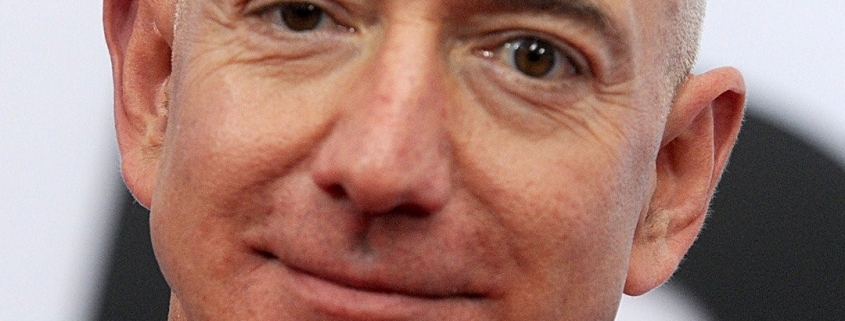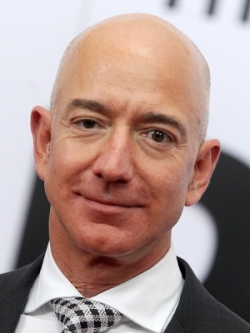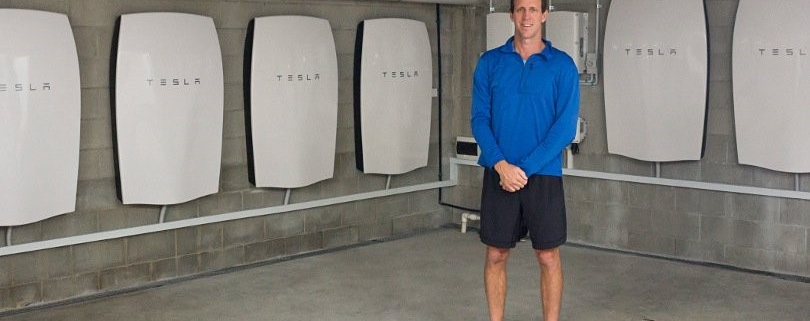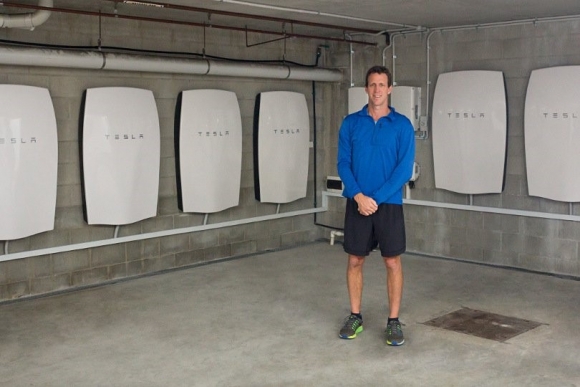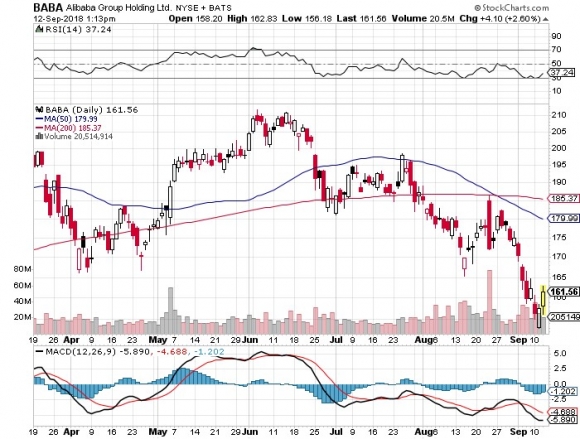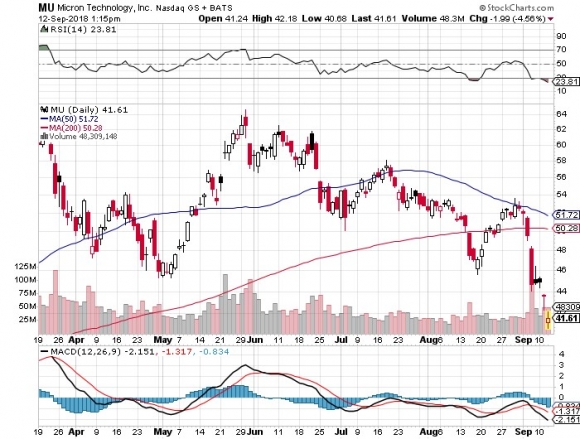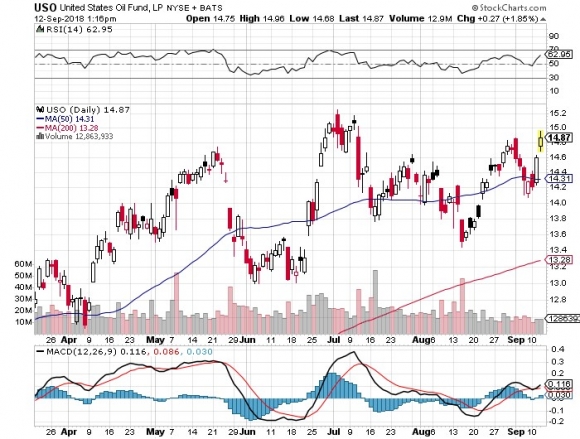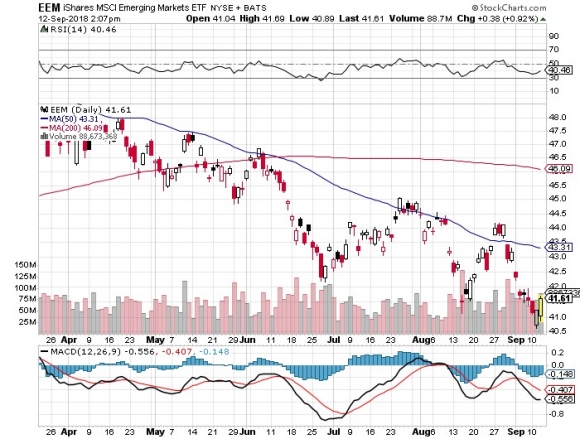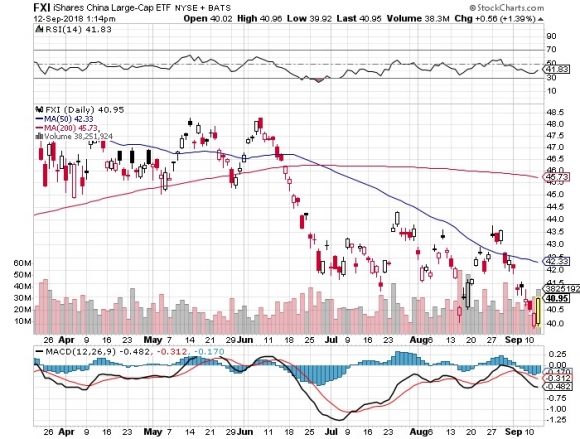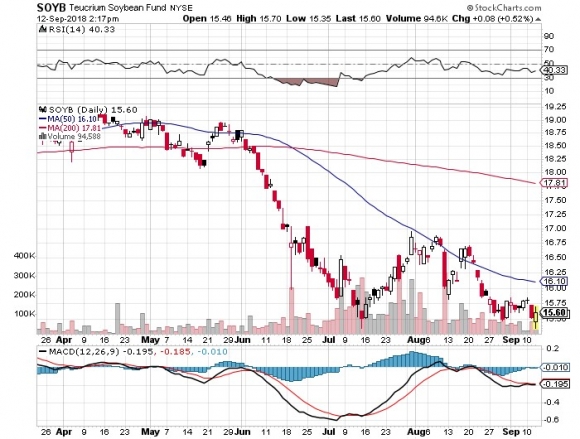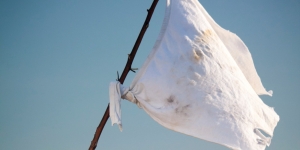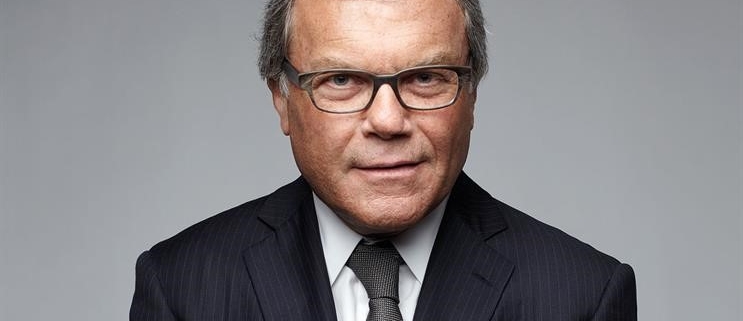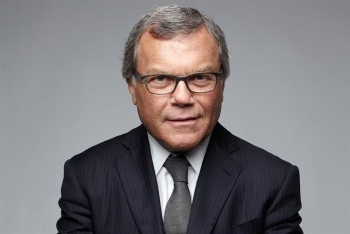Global Market Comments
September 17, 2018
Fiat Lux
Featured Trade:
(THE MARKET OUTLOOK FOR THE WEEK AHEAD),
(AAPL), (CBS), (EEM), (BABA), (UUP), (MSFT), (VIX), (VXX), (TLT),
(TUESDAY, OCTOBER 16, 2018, MIAMI, FL, GLOBAL STRATEGY LUNCHEON)
Talking to hedge fund managers, financial advisors, and portfolio managers around the country de-risking seems to be the name of the game. It’s like they expect a category five hurricane to hit the markets tomorrow.
Even my friend, hedge fund legend David Tepper, says that the stock market is fairly valued and that he is cutting back his equity exposure. However, he is hanging onto his position in Micron Technology (MU), which he believes is deeply oversold. Will the last person to leave Dodge please turn out the lights?
You can expect a real hurricane, Florence, to impact the coming economic data. The usual pattern is for GDP growth to take an initial hit when the big storms hit, and then make back more as reconstruction and government spending kicks in. The scary thing is that there are three more hurricanes on the way.
The big event of the week was Apple’s (AAPL) roll out of its new product line, which will beat the daylights out of competitors. Think better and more expensive across the board, with the top iPhone now costing an eye-popping $1,499.
If you are Life Alert, the private company that sells safety devices to seniors, Apple just ate your lunch. Welcome to the cutthroat world of technology investing.
The drama at CBS (CBS) played out with the departure of CEO Les Moonves. He basically generated virtually all the profits for the company for the past two decades. But in this modern age not keeping your zipper zipped carries a heavy price.
A happier departure was seen by Alibaba’s (BABA) Jack Ma, China’s richest man to focus on philanthropic activity.
Emerging markets (EEM) continued their relentless meltdown, only given a brief respite by profit taking in the U.S. dollar (UUP) on Friday.
A coming strike by the United Steelworkers may mark the onset of new wage demands by labor nationwide. In the meantime, the JOLTS report hit a new all-time high with 650,000 job openings.
For the final “screw you” of the week, Trump indicated he was going forward with tariffs on another $200 billion in Chinese imports. Consumer goods will dominate the new black list in the lead up to the Christmas shopping season. Beat the Grinch and shop early!
With the Mad Hedge Market Timing Index ranging from 50 to 78 last week the market keeps trying and failing to reach new all-time highs on small volume. Volatility (VIX) hit a one-month low.
Thank goodness I took profits on my iPath S&P 500 VIX Short Term Futures ETN (VXX) long. The January $40 call options have cratered from $3.60 to only $1.96. Still, there was enough price action to allow us to take nice profits on our bond short (TLT) and Microsoft (MSFT) long. Microsoft was the top-performing Dow stock last and we got in early!
Last week, the performance of the Mad Hedge Fund Trader Alert Service forged a new all-time high. September has given us a middling return of 2.42%. My 2018 year-to-date performance has clawed its way back up to 29.43% and my trailing one-year return stands at 41.35%.
My nine-year return appreciated to 305.90%. The average annualized Return stands at 34.65%. The more narrowly focused Mad Hedge Technology Fund Trade Alert performance is annualizing now at an impressive 29.41%. I hope you all feel like you’re getting your money’s worth.
This coming week is pretty flaccid in terms of economic data releases.
On Monday, September 17, at 8:30 AM, we learn the August Empire State Manufacturing Survey.
On Tuesday, September 18, at 10:00 AM, the National Association of Homebuilders Home Price Index is released. August Home Sales is out at 10:00 AM EST.
On Wednesday September 19, at 8:30 AM, the August Housing Starts is published.
Thursday, September 20 leads with the Weekly Jobless Claims at 8:30 AM EST, which dropped 1,000 last week to 204,000.
On Friday, September 21, at 8:30 AM, we learn August Retail Sales. The Baker Hughes Rig Count is announced at 1:00 PM EST. Last week saw a gain of 7.
As for me, the harvest season in nearby Napa Valley is now in full swing, so I’ll be making the rounds picking up my various wine club memberships. Screaming Eagle check, Duckhorn check, Chalk Hill check.
Good luck and good trading.
“When the stock goes up 30% in a month don’t think you’re 30% smarter, because when it falls 30% in a month you’ll look 30% dumber,” said Amazon founder Jeff Bezos, the world’s richest man.
Global Market Comments
September 14, 2018
Fiat Lux
Featured Trade:
(SOME GOOD NEWS FROM TESLA), (TSLA),
(SOME SAGE ADVICE ABOUT ASSET ALLOCATION)
I’ll give you a chance to pick yourself off the floor first.
While the media focus seems to be overwhelmingly on problems with the Tesla 3 (TSLA) production these days, the fact is that some of the company’s other business lines are growing like gangbusters.
Orders for the groundbreaking Tesla Powerwall were up an eye-popping 450% during the first half of 2018. This device costs $5,800 ($4,060 after the federal alternative investment tax credit) and can store enough power to run your house for three days. When integrated with your solar rooftop array the combined system allows you to reap a greater return from your alternative energy investment.
Tesla could sell more Powerwalls but is constrained by lithium ion battery supplies from its Sparks, Nevada, Gigafactory. Doubling the world’s lithium ion battery supply in one shot, Tesla is already shopping for a location for a second Gigafactory.
As the company made ramping up Tesla 3 production to 100,000 units this year its top priority, the car has first call on battery supplies.
Tesla has also recently completed several utility-sized battery projects that have consumed lithium ion supplies, including those in Australia, Moss Landing, California, for PG&E, and for Green Mountain Energy in Vermont.
This means that Tesla has already carved out a dominant position in a market that is expected to grow by tenfold over the next five years. GTM Research estimated that sales of energy storage products in the U.S. will soar from $541 million in 2018 to $1 billion in 2019 and $4.6 billion by 2013.
It is developing into a global market. The U.S. only accounts for 30% of the global battery storage market, with energy poor Japan and South Korea holding major shares.
Tesla competitors include Florida-based NextEra Energy in America, E.on in Germany, and Fluence, a joint venture between Siemens and AES, also from Germany. Germany seems to be the place where green energy philosophies and top-rate engineering meet.
It’s impossible to see how much the battery business is contributing to Tesla’s overall bottom line as it does not break out earnings separately. They are subsumed within a Tesla division that once comprised Solar City, which Tesla took over in 2016. Running two businesses off a single lithium ion supply was a stroke of genius, permitting vertical integration and vast economies of scale.
However, Tesla’s solar business saw revenues rise by 56.7% to $784 million over the year-earlier period. Selling a product with exponential demand but limited supply is a good place to be in.
It is puzzling to see so much media attention paid to a company with a market capitalization of only $50 billion. Last week, the controversial firm soaked up perhaps a quarter of all financial reporting coverage.
But when you add up all of the industries that Tesla is radically disrupting, such as autos, the oil industry, the dealer local network, local power utilities, and advertising, it comes close to 25% of U.S. GDP.
If I had just taken the online payments system, auto, rocket, solar, and the battery industries a decade into the future and made $30 billion for myself along the way, I’d probably be smoking a joint, too.
And Elon is only 47. It makes you wonder what you’ve been doing with all your free time.
Send Me Another Half Dozen
Global Market Comments
September 13, 2018
Fiat Lux
Featured Trade:
(EXPANDING MY “TRADE PEACE” PORTFOLIO),
(BABA), (BIDU), (TCTZF) (MU), (LRCX), (KLAC), (EEM),
(FXI), (EWZ), (SOYB), (CORN), (WEAT), (CAT), (DE),
(THE LEAGUE OF EXTRAORDINARY TRADERS)
This morning, U.S. Treasury Secretary Steven Mnuchin mentioned that an effort was being made to get trade talks with China back on track. The Dow soared 160 points in a heartbeat.
Past murmurings by the Treasury Secretary demonstrate that his musings have zero credibility in the marketplace and the move vaporized in minutes. However, given the extreme moves made by the shares of trade war victims, I think it is time to review my “Trade Peace” portfolio and make some additions.
The shares have been so beaten up that I think you can start scaling in now with limited downside and a ton of potential upside.
It’s not a matter of if, but when Trump has to run up the white flag with his wildly unpopular trade wars. As they now stand the new tariffs are threatening to chop $10 off of S&P 500 earnings in 2018, from $168 down to $158, according to J.P. Morgan. Some two-thirds of all U.S. companies have been negatively impacted.
Tariffs have effectively wiped out the benefits of the corporate tax cuts for most companies enacted last December. Who has been the worst hit? Thousands of small manufacturers in Midwest red states that can’t function because they are missing crucial cheap parts they can only obtain from the Middle Kingdom.
At last count there are a staggering 37,000 applications for exemptions from tariffs filed with the U.S. Treasury and only a dozen people to process them. A mere 10% have been granted. It is a giant bureaucratic nightmare.
With the midterm elections now only 37 trading days away, the clock is ticking. If Trump doesn’t cut trade deals with all of our major counterparties around the world before then, the Republican Party stands to lose both the House of Representatives and the Senate on November 6. That will make Trump a “lame duck” president for two more years.
China Technology Stocks – Includes Alibaba (BABA), Baidu (BIDU), and Tencent (TCTZF). It’s not often that you get to buy a company with 61% sales growth, which has seen its shares plunge by 27% in three months, as is the case with (BABA). Just to get (BABA) back up to its June level it has to rise by 37%. This is a stock that will easily double or triple over the long term.
U.S. Semiconductor Stocks – With China buying 80% of its chips from the U.S., stocks such as Micron Technology (MU), Lam Research (LRCX), and KLA-Tencor (KLAC) have been taken out to the woodshed and beaten senseless. Micron is off a withering 41% since the trade war began in earnest in May.
Emerging Markets – China is the largest trading partner for most of the world, and a recession there sparks a global contagion effect. Reverse that, and you stimulate not only emerging markets, but the U.S. economy, too. Look at the charts for the iShares MSCI Emerging Markets ETF (EEM), the iShares China Large-Cap ETF (FXI), and the iShares MSCI Brazil ETF (EWZ) and you will salivate.
Oil – Boost the global economy and oil demand (USO) also. China is the world’s largest incremental buyer of new oil, and it will absorb all of the Iranian crude freed up by the U.S. abrogation of the treaty there.
Agricultural – No sector has been punished more than agriculture, where profit margins are small, lead times stretch into years, and mother nature plays her heavy hand. In this area you can include soybeans (SOYB), corn (CORN), and wheat (WEAT), as well as equipment makers Caterpillar (CAT) and Deere (DE).
Some 20 years of development efforts in China by American farmers have gone down the toilet, and much of this business is never coming back. Trust and reliability are gone for good. Storage silos across the country are full. Did I mention that red states are taking far and away the biggest hit? There are not a lot of soybeans grown in California, New York, or New Jersey.
Even if Trump digs in and refuses to admit defeat, as is his way, there is still a light at the end of the tunnel. Sometime in 2019, the World Trade Organization will declare virtually all of the new American tariffs illegal and hit the U.S. with its own countervailing duties. This is the Chinese strategy. Waiting for them to fold could be a long wait, a very long wait.
Time to Look at the “Trade Peace” Portfolio?
Global Market Comments
September 12, 2018
Fiat Lux
THE FUTURE OF AI ISSUE
Featured Trade:
(THE NEW AI BOOK THAT INVESTORS ARE SCRAMBLING FOR),
(GOOG), (FB), (AMZN), MSFT), (BABA), (BIDU),
(TENCENT), (TSLA), (NVDA), (AMD), (MU), (LRCX)
“I’m prepared to eat our children because if I don’t, somebody else will,” said Sir Martin Sorrell about the extreme competitiveness of online marketing.
Global Market Comments
September 11, 2018
Fiat Lux
Featured Trade:
(A NOTE ON ASSIGNED OPTIONS,
OR OPTIONS CALLED AWAY), (MSFT),
(TEN MORE REASONS WHY BONDS WON’T CRASH),
(TLT), (TBT), (ELD), (MUB)
Legal Disclaimer
There is a very high degree of risk involved in trading. Past results are not indicative of future returns. MadHedgeFundTrader.com and all individuals affiliated with this site assume no responsibilities for your trading and investment results. The indicators, strategies, columns, articles and all other features are for educational purposes only and should not be construed as investment advice. Information for futures trading observations are obtained from sources believed to be reliable, but we do not warrant its completeness or accuracy, or warrant any results from the use of the information. Your use of the trading observations is entirely at your own risk and it is your sole responsibility to evaluate the accuracy, completeness and usefulness of the information. You must assess the risk of any trade with your broker and make your own independent decisions regarding any securities mentioned herein. Affiliates of MadHedgeFundTrader.com may have a position or effect transactions in the securities described herein (or options thereon) and/or otherwise employ trading strategies that may be consistent or inconsistent with the provided strategies.










